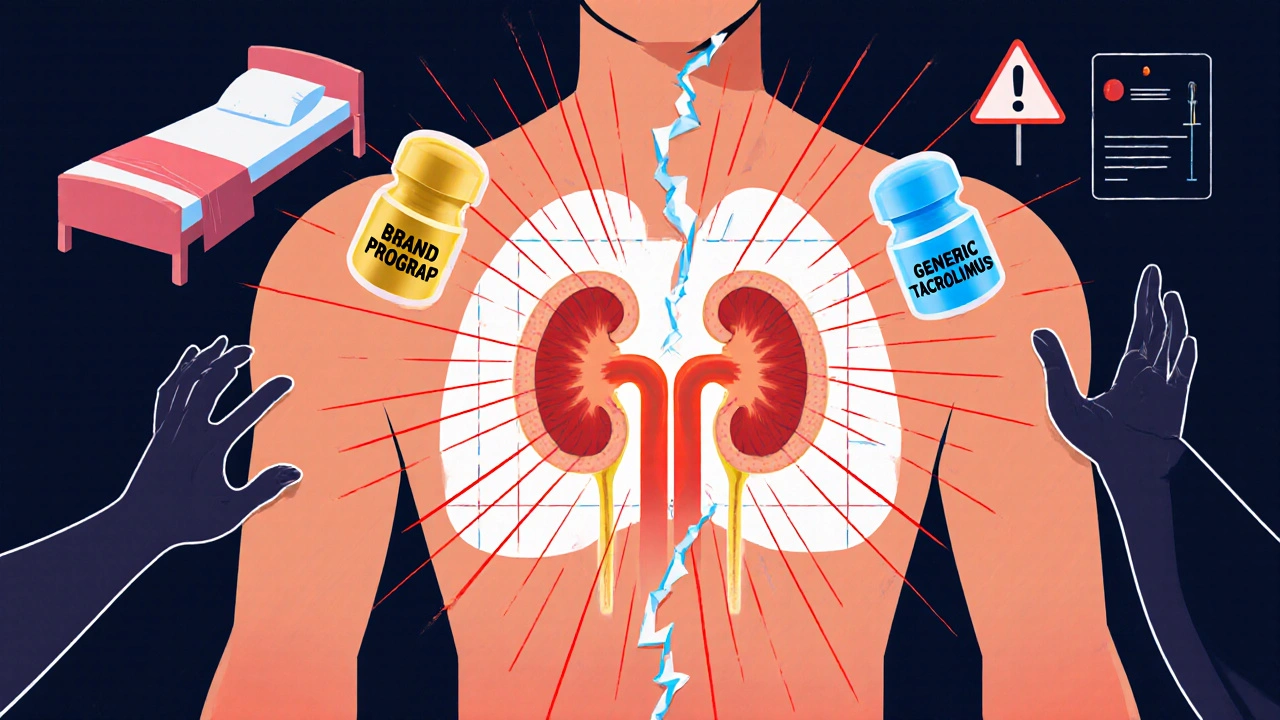Cyclosporine Generic: What You Need to Know About Cost, Safety, and Alternatives
When you hear cyclosporine generic, a generic version of the immunosuppressant drug originally sold as Sandimmune or Neoral. Also known as cyclosporin, it works by calming down your immune system to prevent organ rejection or reduce autoimmune flare-ups. Many people rely on it after kidney, liver, or heart transplants, and others use it for severe psoriasis or rheumatoid arthritis when other treatments fail. The big draw? It’s far cheaper than the brand name—often less than a dollar a pill—without sacrificing effectiveness for most users.
But not all generics are created equal. For drugs like cyclosporine, a narrow therapeutic index medication where small changes in blood levels can cause rejection or toxicity, even tiny differences in how the body absorbs the drug can matter. That’s why some transplant centers stick to brand-name versions, especially in the first few months after surgery. Studies show that switching between brands or generics can trigger spikes in blood levels or sudden drops—either of which can be dangerous. If you’re on cyclosporine, consistency matters: once you find a generic that works, stick with it. Don’t let your pharmacy switch you without telling you.
Side effects are common but manageable. Most people get shaky hands, headaches, or high blood pressure. A lot also notice gum swelling or increased hair growth—annoying, but not life-threatening. The real risks come from kidney damage and higher infection rates, which is why regular blood tests are non-negotiable. If you’re on cyclosporine, you’re likely also taking other meds like steroids or mycophenolate. That mix can strain your liver or kidneys, so your doctor will monitor you closely. Some patients trade cyclosporine for tacrolimus (Prograf), which has fewer cosmetic side effects but a higher risk of diabetes. Others switch to newer drugs like belatacept, which doesn’t hurt the kidneys at all—but costs ten times more.
There’s no one-size-fits-all answer. If you’re paying out of pocket, the generic is a no-brainer. If you’ve had rejection episodes before, your doctor might recommend staying with the brand. And if you’re on a tight budget, ask about patient assistance programs—some manufacturers offer free or discounted generic cyclosporine if you qualify. You’re not just choosing a drug; you’re choosing a long-term plan that balances cost, safety, and your daily life.
Below, you’ll find real-world insights from people managing transplant recovery, autoimmune conditions, and medication costs. From how to spot a bad batch of generic cyclosporine to what to do when your insurance drops coverage, these posts cover what actually matters when you’re living with this drug every day.

